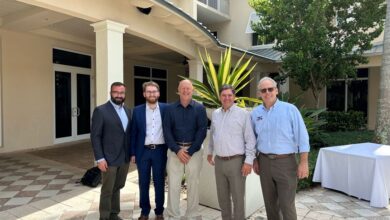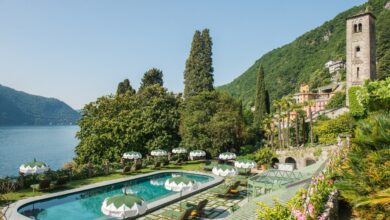
Looking at the Net Revenue Impact of Chatbots
By Larry and Adam Mogelonsky | November 1, 2023
Artificial intelligence will be a topic for hotels for decades to come, but right here in Q4 2023, it’s all about deploying incremental solutions to drive more and more efficiencies and profitability. Foremost among all the other AI tools that hotels can deploy is the guest-facing chatbot, which has the potential to help drive a channel shift away from more expensive third parties. And yet, it’s rare to see a lot of financial scenarios published on the matter that explicitly show the contribution of these technologies onto the bottom line.
In collaboration with Tata Crocombe, we investigated the chatbot deployment at his private island resort and two beach resorts in the Cook Islands in the South Pacific, respectively the Aitutaki Lagoon Private Island Resort, The Rarotongan Beach Resort & Lagoonarium, and Sanctuary Rarotonga.
In the pursuit of greater and greater GOPPAR and, ultimately, net operating incomes (NOI), there is no clearer place to look for a quick win in 2024 than in growing net revenues by reducing customer acquisition costs (CAC). This objective is achieved by increasing the percentage of direct business significantly by winning guests to book online direct with the hotel rather than a third-party distribution partner, and in the process reducing commissions to the OTAs that can be as high as 28% down (comprised of a 15% standard commission, a 3% preferred commission and a 10% members commission) to the direct CAC which can come in as low as 2%.
As a preliminary caveat, an AI agent is not a panacea; it must be deployed in tandem with an array of other tactics, some online and others not, that will together make for a better reservation experience. To this end, Crocombe took the following actions before deploying a chatbot solution:
- Development of a landing page called What Room is Best for Me that has helped guests work out for themselves where they want to stay, adding an element of gamification and ‘sense of discovery’ to the customer journey
- Thorough upgrade to each property’s website with lots of new information, imagery and virtual room tours
- Direct booking promotions including 15% off on accommodations then 10% off on restaurant, bar, spa and gift shop purchases
- With the observation that some guests will always want to deal with humans, Crocombe’s team connected a 24/7 live chat and recruited a reservations center in the Philippines so that going forward this blended model would facilitate flexibility for any guest’s preferences
To demonstrate the longtail of what these chatbot tools can do, let’s consider a simple hypothetical situation – all based on Crocombe’s firsthand experiences – for a leisure-dominant, independent resort with 200 keys, average yearly occupancy of 75%, ADR at $250, OTA commissions (including preferred and members additional commissions) at 28% and direct channel CAC at 2%.
Since reopening from the COVID-19, Crocombe has introduced a myriad of strategies and tactics such as website widgets promoting direct bookings, 24/7 live chat, room packages and new loyalty programs that have grown his direct business from 20% (pre-pandemic) to 45%. But he sees chatbots as offering the biggest potential to convert lookers to direct bookers, targeting 65% direct bookings with a full roll out of a ChatGPT-enabled chatbot onto his properties’ websites.
With these numbers, we can then look to see the overall size of the prize in terms of increasing direct bookings from 45% to 65% within a fiscal year.
Applying this 20% delta, we can deduce the net revenues increase as follows:
200 keys for 365 days/year at 75% occupancy = 54,750 room nights sold
55% (100% minus 45%) of 54,750 room nights at $250 ADR = $7,528,125 revenues at start
35% (100% minus 65%) of 54,750 room nights at $250 ADR = $4,790,625 revenues at end
OTA room bookings shifted to direct channel = $2,737,500 gross revenues
CAC difference (28% OTA commission minus 2% direct channel costs) = $711,750 savings
Yes, there are some assumptions baked in here, particularly as this supposes a one-to-one conversion of OTA to direct reservations with no attrition to total occupancy. Regardless, a half-million-plus boost to net revenues is something that should make any hotelier perk up, especially as the vast majority of this savings in net revenues flows straight through to NOI.
For owners, the long-term effect is more safety in terms of asset valuation growth. For the Cook Islands as Crocombe pointed out, the cap rate hovers around 10%, which means a multiple of 10 for this NOI flowthrough savings that can increase the value of the hotel by approximately $7 million as a rough cut.
Next, we must also consider TRevPAR growth whereby it’s reasonably assumed that the guests who book direct versus the OTAs will also have a greater ancillary spend per guest – particularly for resorts – and will be more likely to contribute to the brand via return visits to the same property or others in the portfolio. Less readily quantifiable, but still significant, benefits of encouraging this channel shift include better guest satisfaction that will translate into more word of mouth to help grow occupancies and fewer chargebacks for which evidence points to the majority of these emanating from third-party bookings.
Ultimately, there are lots of other ways that AI can and will help hotels realize more revenues, profits and value. It’s just a matter of starting with one objective and seeing it through to completion then looking for the next application and the next until, before you know it, you have transformed the hotel into an AI-first self-learning and self-optimizing hotel.




Get involved!
Comments